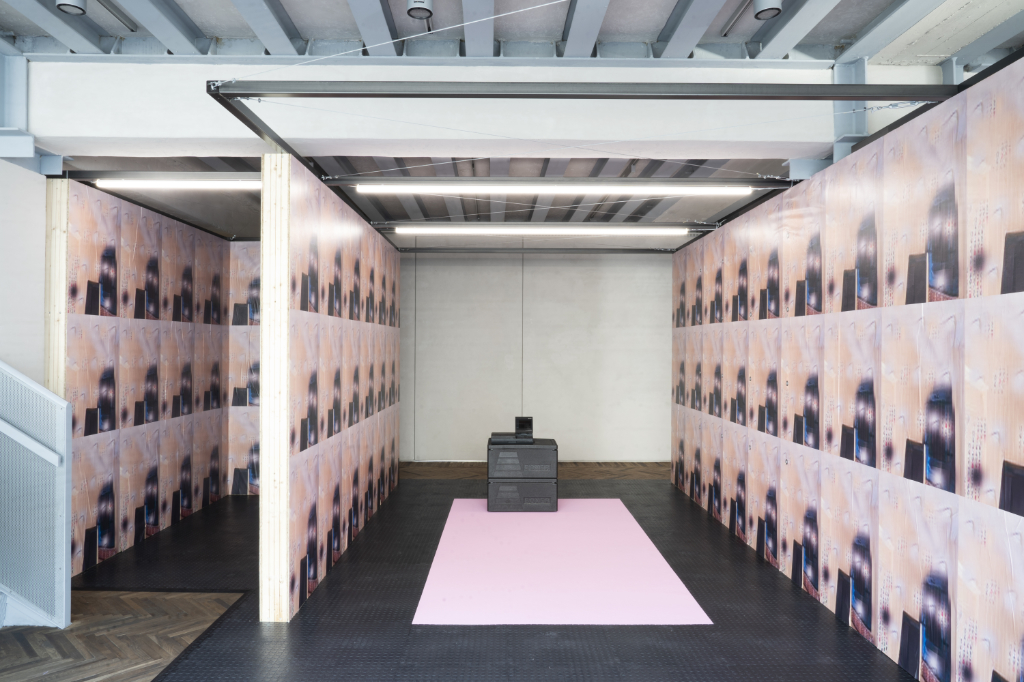Text by CLOT Magazine

Sturm&Drang, a new exhibition at Osservatorio Fondazione Prada, explores Computer-generated imagery (CGI) practices, experiences, and environments. CGI is the creation of still or animated visual content with imaging software. It is used to produce pictures and videos for many purposes, including film special effects, video games, online chat rooms but also warfare, medicine, engineering or architectural design, visual art, advertising, television shows, as well as augmented reality (AR) and virtual reality (VR) applications.
The exhibition is a conglomeration of four environments —quotes of both existing or imaginary spaces— that usually host the ‘making of’ or the fruition of CGI programming in contexts such as video games, science fiction, and hi-tech engineering. On the first floor of Osservatorio, the visitor encounters a prototype of a First Person Shooter (FPS) setting, a weapon-based combat in a first-person perspective, widely used in videogame design and in military training. The second environment pays homage to the science fiction novel Neuromancer written in 1984 by American-Canadian author William Gibson.
The second floor of Osservatorio is occupied with walls full of monitors and samples of technical apparatus proposing a method to exhibit CGI material in the context of a museum space. The first part of the display is devoted to online tutorials realized to educate users of CGI production software. The second environment focuses on the simulation of architectural spaces employing CGI systems and specifically on rendering production and manufacturing of 3D environments.
Curated by Luigi Alberto Cippini, Fredi Fischli and Niels Olsen, Sturm&Drang opens on September 9 and runs until January 23, 2022.






